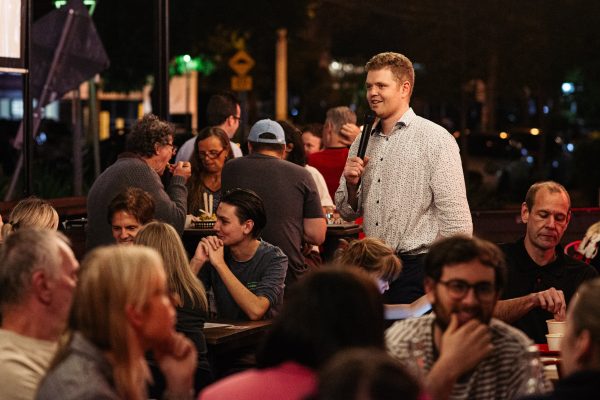About The 2032 Brisbane Olympics
The Brisbane Olympic Games
The 2032 Olympics will catapult south-east Queensland onto the world stage, but there’s a long way to go before the region will be ready to meet the demands of hosting the Games.
Organisers have pitched the sporting spectacle as a more sustainable and cost-effective event that will leave a meaningful legacy for the growing region.
“You literally couldn’t buy the type of name recognition that the Olympics would bring to a city,” Brisbane Lord Mayor Adrian Schrinner told the ABC.
Over the next 11 years, authorities will pour major resources and money into transforming Brisbane into a new world city — though the full cost is still unclear.
Utilising venues new and old at the Brisbane, Queensland Olympic Games
The 2032 Olympic master plan includes three main hubs in the state’s south-east corner, which will host 28 sports split across them.
There will be 21 venues in Brisbane, seven on the Gold Coast and four on the Sunshine Coast.
Football preliminary matches will also be played in Cairns, Townsville, Toowoomba, Sydney and Melbourne.
The Gabba will be the jewel in Brisbane’s Olympic crown, hosting the athletics as well as the opening and closing ceremonies.
The stadium is due for a $1 billion rebuild that will increase its capacity to 50,000 spectators.
As part of its ‘New Norm’, the International Olympic Committee has scrapped costly old rules requiring sports to have their own purpose-built facilities.
Cr Schrinner said it meant 84 per cent of venues for the 2032 Games would be existing, refurbished or temporary.
“This is not so much about building new facilities or stadiums or sporting arenas — it’s about trying to use what we’ve got or upgrade what we’ve got,” he said.
“We have seen other cities just throwing endless amounts of money at the Olympics — that’s not the way we’ve pitched it for Brisbane.”
But there are some major new venues in the pipeline, including a 15,000-seat aquatic centre in the Brisbane CBD, to host swimming and water polo.
The master plan also includes a new 12,000-seat indoor basketball facility, a 10,000-seat gymnastics venue and a boxing centre at Moreton Bay.
The main athletes’ village will be built on prime Brisbane waterfront real estate at Hamilton, with smaller accommodation options on the Gold Coast, Sunshine Coast and Kooralbyn, near the rowing venue.
What about the cost of the Brisbane Olympic Games?
There is a long history of cost blowouts for Olympic host cities, but organisers of the Brisbane Games said the anticipated $4.5 billion operating budget will be “cost neutral”.
However, University of Queensland tourism and events expert Judith Mair said infrastructure expenses were excluded from those projections.
“The problem with that budget is that doesn’t include the public transport or the new road infrastructure … it doesn’t include the cost of security, it doesn’t include the cost of the staff who’ll be working in the organising committee,” Dr Mair said.
Cr Schrinner said those costs would be worked through in the coming years and was confident Brisbane would not repeat the mistakes of past Olympics.
“One of the things in other [host] cities that often creates cost pressure is an accelerated timeframe,” he said.
“We have 11 years to prepare for the Games and to be ready — that’s a really strong position to be in.”
When asked on ABC Radio Brisbane what extra costs there would be, Queensland Premier Annastacia Palaszczuk said “that’ll be worked out”.
“But it’s actually part of our ongoing infrastructure budget anyway, which is over $50 billion over the four years,” she said.
“So we will pull out some of those things that are absolutely critical, and make sure they’re done in that 12-year horizon.”
Prime Minister Scott Morrison the Commonwealth and Queensland governments would work together to share both the costs and the decisions around the Games.
He said it was estimated the event would bring in almost $18 billion in economic and social benefits for the country.
“As someone from Sydney I know how important it was to Sydney 20 years ago, more than that now,” Mr Morrison said.
“Once you’re an Olympic city, you’re an Olympic city, you’re on the international map.
“The way this bid has been put together and the way we’ve worked together is we’re substantively using planned and existing infrastructure and infrastructure that south-east Queensland, and more broadly across the state, people are going to need.
“That was a key part of the bid that they understood these are things we needed to build.”
How will people get around?
South-east Queensland is forecast to grow by 1.5 million people by 2041 and transport infrastructure is already feeling the pinch.
Come the 2032 Games, major projects like Cross River Rail, Brisbane Metro and the Coomera Connector will already be up and running.Want more local news?We offer tailored front pages for local audiences in each state and territory. Find out how to opt in for more Queensland news.Read more
But Cr Shrinner acknowledges more public transport will be needed to link venues and spectators.
“In the end, the first reason that we went for the Olympics was to get better infrastructure and better transport infrastructure in particular,” he said.
“There will need to be continuous transport and road upgrades between now and 2032 … and we’ll need all three levels of government to chip in.
“It’s needed for our growing population, not just for the Olympics.”
Dr Mair said locals could expect to see projects accelerated in the lead up to the Games.
“Infrastructure improvements, road transport improvements, public transport improvements that might have been in the 30-year plan for the city can be brought forward so they’re ready in time for the Olympics,” she said.
“Although there are already plans in place to duplicate the M1 down to the Gold Coast, I think something similar may have to be thought of going up to the Sunshine Coast too.”
‘It’s a game changer’ 2032 Brisbane Olympic Games
For local sporting groups, the promise of new Olympic venues is a dream come true.
Brisbane’s venue master plan includes a new whitewater centre at the Redlands to host the fast-paced sport of canoe slalom.
Scott Sharples from Paddle Queensland said it would be fantastic for the development of home-grown athletes who have little to no way to enjoy their sport locally.
“For the sport of paddling in Queensland, it’s a game-changer,” Mr Sharples said.
“The only other facility to that standard is in Penrith.
“We see this opportunity as a great way to get more families and junior athletes in the sport to be those future Olympians and podium athletes come 2032.”
As the Winter Olympics kicks off in Beijing, preparations for Brisbane’s Summer Olympics gather pace.
But the 10-year run to the Games could still be as bumpy as the snowy moguls in China.
South-east Queensland will have changed dramatically by the time more than 10,000 competitors descend on a post-COVID Brisbane.
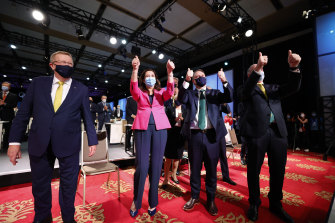
There will be the new Queen’s Wharf entertainment and casino hub on the Brisbane River, a new commercial, business and residential hub over the Cross River Rail station at Woolloongabba and – most likely – a new passenger rail line to Caloundra.
Brisbane and south-east Queensland only won the right to host the Olympics six months ago, but the important legislation that lays out Brisbane’s all-important organising committee for the Olympics and Paralympics passed the Queensland Parliament on December 2.
Queensland Premier Annastacia Palaszczuk – who is also Queensland’s Olympics minister – will soon announce her final four members of the 22-member board of directors of the Brisbane Organising Committee for the Olympic and Paralympic Games (BOCOG).
BOCOG will be the most powerful body for the 2032 Olympics and Paralympics. It will operate at arm’s length from the government and will be the entity that organises the Games.
Its responsibilities include the accommodation, transport, venues, the sports program, ticketing and the broadcasting which will generate much of the revenue to cover the Games’ $5 billion cost.
In addition, Queensland has announced an international recruitment campaign is underway for another five independent directors – including the BOCOG president and four independent directors.Advertisementhttps://501423df1701a2e6dddbce1e3096bd96.safeframe.googlesyndication.com/safeframe/1-0-38/html/container.html
Those final five positions – including the BOCOG president – have not yet been decided.
The outcome of the upcoming federal election will decide the fate of two of Prime Minister Scott Morrison’s four appointments to BOCOG.
Morrison appointed two members of federal parliament, as well as Tracey Stockwell, the former US Olympic swimming triple gold medallist – now vice president of Swimming Australia – and Gold Coast Titans chief executive and director of Paralympics Australia chief executive Rebecca Frizelle.
Federal Sports Minister Richard Colbeck and Queensland’s Sunshine Coast MP Ted O’Brien were given the sought-after positions on BOCOG in December.
However, if the Coalition loses the federal election, both MPs will lose their places on BOCOG, according to the enabling legislation that passed Queensland Parliament in December.
Previously announced members of the Brisbane Organising Commitee for 2032 Brisbane Olympics and Paralympics
- John Coates AC, President of the Australian Olympic Committee
- Matt Carroll AM, CEO of the Australian Olympic Committee
- Jock O’Callaghan, President of Paralympics Australia
- Robyn Smith, Australian member of the International Paralympic Committee Governing Board
- Bronte Barratt OAM, elected athlete representative
- Kurt Fearnley AO, elected athlete representative
- Lord Mayor Adrian Schrinner, Brisbane City Council
- Mayor Karen Williams, Redland City Council (Lord Mayor’s nomination)
- Tracy Stockwell, vice-president Swimming Australia (Prime Minister’s nomination)
- Rebecca Frizelle, Gold Coast Titans chief executive, (Prime Minister’s nomination)
- Federal Sports Minister Richard Colbeck, (Prime Minister’s nomination)
- Sunshine Coast federal MP Ted O’Brien, Prime Minister’s special envoy to the board)
The legislation says both federal MPs would lose their positions if “the relevant political party stops being recognised in the House of Representatives of that parliament as being in government”.
A spokesman for Labor’s shadow sports minister, Senator Don O’Farrell, on Friday confirmed the Coalition pair would be dumped.
“Those government appointments would become vacant automatically if there’s a change of government,” a spokesman said.
Ms Palaszczuk and Mr Morrison jointly choose the five remaining directors – identified by Odgers Berndtson – including the BOCOG president.
However, the timing of the announcement is up to Ms Palaszczuk, according to a spokesman for Senator Colbeck.
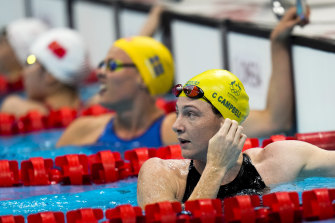
Ms Palaszczuk said in late December those final five directors would be a mix of men and women.
“At least one of the independent directors will be an Aboriginal or Torres Strait Islander person, and there will be balanced representation of men and women, so that local, national, and international partners create a lasting legacy for Queensland and the nation,” she said.
Australian Olympics Committee chief executive Matt Carroll said the five independent director roles were important to fill.
“From the AOC perspective, there’s such a great opportunity to supercharge sport in Queensland and Australia more broadly. The right people will help us achieve that goal.”
Queensland has a head start to its “more than $5 billion” Olympics with around 80 per cent of its venues already in place after the Gold Coast Commonwealth Games in 2018.
Queensland wants a reshaped Gabba to host Opening and Closing Ceremonies and the athletics.
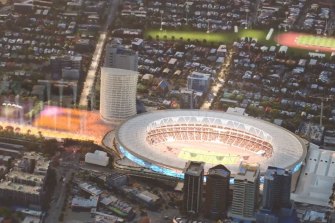
However, there are definite challenges, mainly in the 50:50 agreement between federal and Queensland governments to fund infrastructure and the possible impact of the yet-to-be announced City Deal, which will lay out a cost-sharing plan for all three levels of government.
One insider says one of the complicating factors in Ms Palaszczuk’s decision is finding people who will stay the distance.
“One of the considerations is that the people who start this process are unlikely to still be there in 10 years time,” the person said.https://imasdk.googleapis.com/js/core/bridge3.504.0_en.html#goog_1172560313Play VideoPlay video2:16IOC President to meet with Peng Shuai at Beijing Olympics
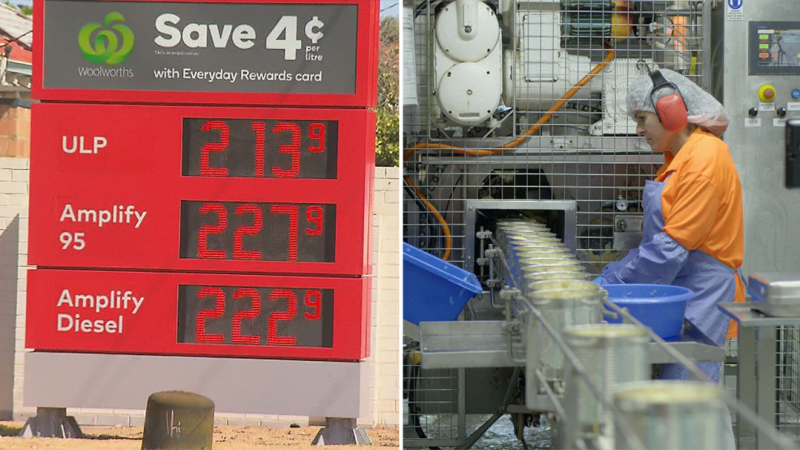
Brisbane Olympic Games
IOC President Thomas Bach has said he will meet with Peng Shuai while in Beijing for the Winter Olympics.
Big infrastructure questions have to be considered and answered.
One example is a passenger rail spur from “around Nambour” into Caloundra, being debated against an alternative “extra lane of two” on the highway between Brisbane and the Sunshine Coast.
“These are the questions that have to be confronted and the choices made.”
Brisbane 2032 athletes village
The Olympics will do for Northshore Hamilton what Expo 88 did for South Bank.
Northshore Hamilton will undergo a spectacular transformation to become the main athletes’ village for the Brisbane 2032 Olympic and Paralympic Games – further cementing its reputation as Brisbane’s future premier riverfront lifestyle precinct.
Construction of the village will crystalise the long-term plan for the area and rejuvenate the existing industrial land.
This will add to an already popular precinct, which is home to landmarks such as Portside, Eat Street Markets, and Alcyone Hotel, and some of Brisbane’s best waterfront living.
The athletes’ village will host more than 10,000 athletes and team officials for the Olympic Games and more than 5000 for the Paralympics.
The village will be constructed on Economic Development Queensland-owned land within the Northshore Hamilton Priority Development Area.
Northshore’s prime waterfront location, proximity to the CBD and competition and training venues, let alone transport connections, make it an ideal location – even after the Games are over.
Post the Games, Northshore will deliver a diverse residential offering, including aged care, retirement living social and affordable housing, key worker, hotel, build-to-rent and market accommodation.

What will the 2032 Olympic and Paralympic Games mean for Queensland?
The Olympic and Paralympic Games will create a two-decade pipeline of opportunity for Queensland, delivering economic and social benefits across the State with more than $8 billion in benefits predicted.
This opportunity will benefit communities, tourism operators, sporting organisations and local businesses.
The 2032 Games are also expected to support 91,600 full-time equivalent jobs in Queensland and 122,900 nationally
The Tokyo Games ended just a few weeks ago, and it’s already time to start to plan for the next Olympics. Brisbane, the city chosen by the International Olympic Committee to host the 2032 Summer Games, is now doing just that.
Australia will be home to the world’s largest sporting for the third time after the capital city of Queensland invested six years of work and diplomatic mediation.
“Our purpose was to seek an amazing, once-in-a-lifetime opportunity for our region and for our city,” said the Mayor of Brisbane Adrian Schrinner.
That opportunity — according to the city administration’s calculations — will guarantee a boost to Queensland’s economy of $8.1 billion and $17.6 billion, for Australia as a whole. The federal and local governments, meanwhile, will have to invest at least $5 billion to prepare Brisbane to host the Games.
Brisbane Olympics: The sustainable Games
In meeting the demands of the International Olympic Committee, Australia won the competition over other major countries such as Germany by being more convincing on one key point: sustainability. A central part of the proposal submitted to the IOC was based on sustainable projects designed to minimise harmful emissions of the 2032 Games.
“Right from the beginning we wanted this to be a sustainable Games,” Schrinner said. “We wanted to commit and … we would be the first host city to contractually agree to a climate-positive Games.”
In fact, it is no coincidence that the Queensland government has set 2030 as the deadline for achieving 50% coverage of energy needs through renewable sources. In view of the Brisbane Olympics 2032, sustainability thus remains a key theme in the state’s development policies – be it through mobility or in energy production and distribution.

Innovative infrastructure to prepare Brisbane for the Olympics
According to the organisers’ plans, infrastructure will take the lion’s share of investments, with a particular focus on sustainable mobility — one of the key tools to make a sustainable and modern city.
“The Australian and Queensland governments are fully funding the infrastructure projects to be delivered in preparation for the Games, ensuring that they deliver for Brisbane 2032, but also leave a lasting legacy,” said Australia’s Prime Minister Scott Morrison
In terms of mobility, a new underground subway station will be built on Roma Street, serving the Roma Street Cross River Rail subway line. It will bring future spectators directly into the Brisbane Arena, an indoor stadium capable of accommodating 17,000 people.
Part of the infrastructure spending will then be invested in the construction of new stadiums or the expansion of existing ones. AU$1 billion will be spent to upgrade the current cricket stadium (Woolloongabba Stadium), which will become the Brisbane Olympic Stadium where the opening and closing ceremonies of the Games will be held in front of a live audience of 50,000 people. In addition to this, a second stadium will be built and the Brisbane Arena will be expanded.
The Olympic Village, meanwhile, will be built in Northshore Hamilton, 6 kilometres (3.72 miles) away from the city center, and where 14,000 beds will be set up for the teams of the various national teams.
In general, 80% of the facilities that will host the competitions are already existing, but will need to be upgraded and expanded.
Brisbane Olympics 2032:investment and impact on the city
Brisbane’s race towards the Olympics has already begun. After struggling through the difficult months of Covid-19, Brisbane and Queensland have implemented an infrastructure spending plan designed to boost the economy of the city and the state.
Over the next four years, the state has planned investments of AU$23 billion to modernise the road network. Overall, the infrastructure plan approved by the Queensland government calls for spending of AU$51.8 billion in the next four years, to be invested in the short and medium term on major projects such as the Cross River Rail and the Brisbane Metro. These are major works for sustainable mobility, that will support the growth and development of the city.
Specifically for the 2032 Olympic Games, projects are in the works that will change the face of Brisbane. But the construction sites will only get up and running during the second half of this decade. According to a report carried out by KPMG and commissioned by the Queensland government, between 2027 and 2030 between $800 million and $1.1 billion dollars will be invested each year in the city.
These investments in works will also create work. In fact, the city administration calculates that the preparatory phase and the Games themselves will help create 130,000 jobs.
Featured Events
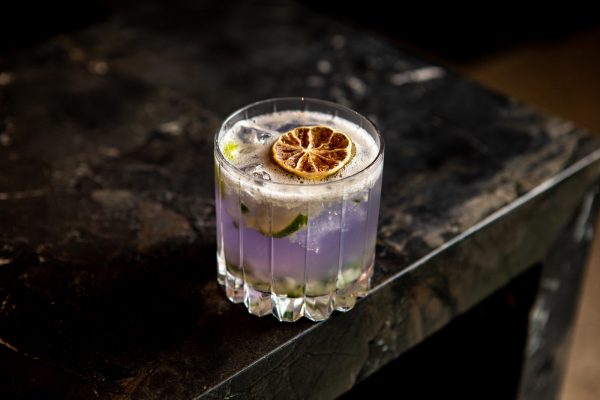
Another Listing
